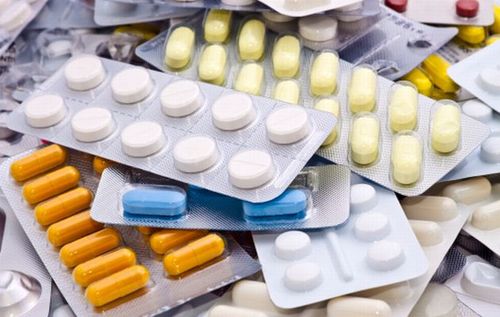Project Report For Tablet Manufacturing
IntroductionTablet Manufacturing
Project report for Tablet Manufacturing is as follows.
The goal of the project is to set up a small-scale manufacturing facility for pharmaceutical formulations (Tablets, Capsules, etc.). The pharmaceutical business is separated into two segments: bulk drugs and formulations. Bulk pharmaceuticals are medicinally active pharmaceutical ingredients (APIs) that are utilised in the production of formulations.
The Indian pharmaceutical sector produces around 400 bulk medications over a wide range of therapeutic areas. Formulations continue to make up a significant portion of overall pharmaceutical output (in value terms). Formulations are the end-products of the pharmaceutical production process, and they can be given to patients as tablets, capsules, injectables, or syrups. Antibiotics, pain relievers, and vitamins are all available in tablet form.
Project Report Sample Of
Tablet Manufacturing
Get Completely Custom Bankable Project Report
Their weight varies between 25 and 500 milligrammes. Capsules are solid formulations with a gelatin shell encasing a powder medication. The shell, which dissolves after ingesting, masks the flavour of the active ingredient. Antibiotics make up the majority of capsules.
Tablets are solid pharmaceutical dosage forms that contain medicinal ingredients with or without appropriate diluents and are made by compression or moulding. Tablets, according to the British Pharmacopoeia, are solid preparations that contain a single dosage of one or more active substances and are made by compressing a consistent amount of particles.
They have been in general usage since the late 1800s, and their popularity continues to grow. In today’s world, the tablet is unquestionably the most common method of presenting solid dose forms for oral administration. Tablets are still widely used as a dosage form because of the benefits they provide to both the producer and the patient, including precision of dose, compactness, portability, the blandness of taste, and ease of administration.
The form, size, and weight of the tablets varies widely depending on the amount of medication and the method of administration. The tablets are typically disk-shaped with a convex surface. Although discoid is the most common shape, tablets can also be round, oval, oblong, cylindrical, or triangular.

Depending on the amount of drug component present and the planned manner of administration, they might vary substantially in size and weight. Compression compressed tablets and moulding moulded tablets or tablet triturates are the two main types of tablets (TT). Compressed tablets are often produced on a large scale, whereas moulded tablets are typically produced on a smaller scale.
Capsules are solid dosage forms in which the medication material is encased in a soluble container or shell made of a suitable type of gelatin, which can be firm or soft. The capsules are defined by the British Pharmacopoeia as a solid product with hard soft shells of varied sizes, shapes, and capacities, each carrying a single dose of the active ingredient. The capsules are meant to be taken by mouth.
Market Potential Of Tablet Manufacturing
The size of the tablet market was estimated at US$ 41.16 billion in 2021, and from that year until 2029, total revenue is anticipated to increase at a CAGR of 3.4%, or roughly US$ 53.78 billion.
Expenses

Product Cost Breakup

Reveneue Vs Expenses

Market Trend

In the global medicines industry, India holds a significant place. The country also boasts a significant number of scientists and engineers with the ability to propel the sector forward to new heights. Indian pharmaceutical companies now supply over 80% of the antiretroviral medications needed worldwide to address AIDS (Acquired Immuno Deficiency Syndrome). Between 2015 and 2020, the Indian pharmaceutical sector is predicted to expand at a rate of over 15% per year, outpacing the worldwide pharmaceutical business, which is expected to increase at a rate of 5% per year.
As per Indian Ambassador to the United States, the industry is predicted to rise to US$ 55 billion by 2020, making it the world’s sixth largest pharmaceutical market by absolute size. The pharmaceuticals market is dominated by branded generics, which account for over 80% of the market (in terms of revenues).
According to figures from the Ministry of Commerce and Industry, India maintained its lead over China in pharmaceutical exports, with a year-on-year increase of 11.44 percent to US$ 12.91 billion in FY 2015-16. Pharmaceutical product imports increased by 0.80 percent year over year to US$ 1,641.15 million.
With around 24,000 competitors, the Indian pharmaceutical market is extremely fragmented (around 330 in the organised sector). More over a third of the market is made up of the top 10 corporations. In terms of revenue, the Indian pharmaceutical sector accounts for around 1.4 percent of the global pharma industry and 10% in terms of volume.
As per a survey by Equity Master, the Indian pharmaceuticals market is the third biggest in terms of volume and the thirteenth largest in terms of value. 4 India is the world’s largest supplier of generic pharmaceuticals, with Indian generics accounting for 20% of worldwide exports by volume. Because the Indian pharmaceutical business is highly fragmented, consolidation has recently become a prominent feature.
A major portion of Indian pharmaceutical businesses’ income comes from exports, in addition to the home market. While some concentrate on the generics market in the United States, Europe, and semi-regulated markets, others focus on bespoke production for innovators.

